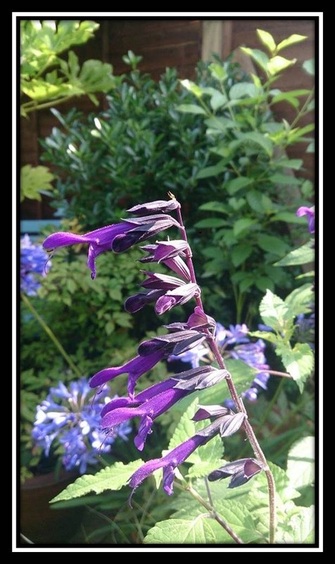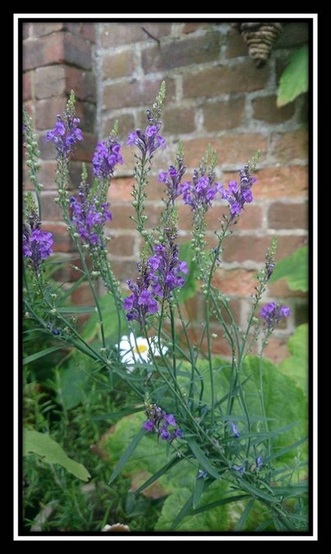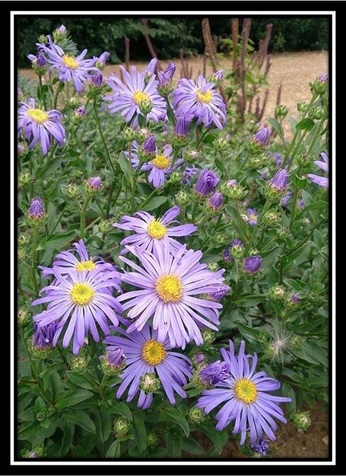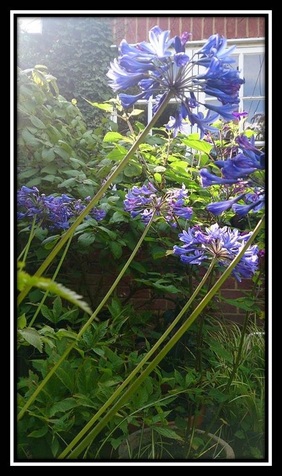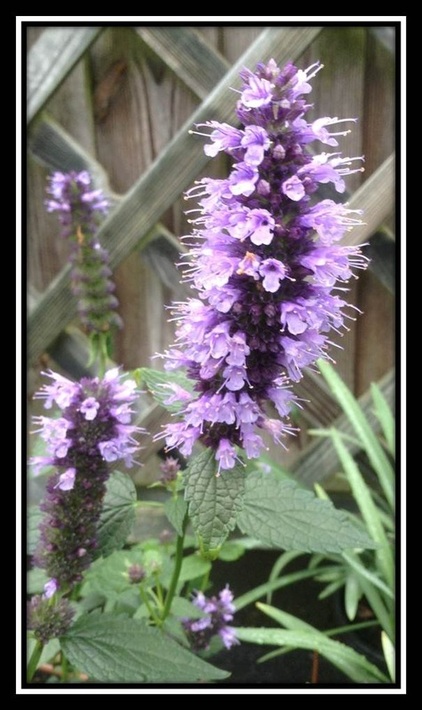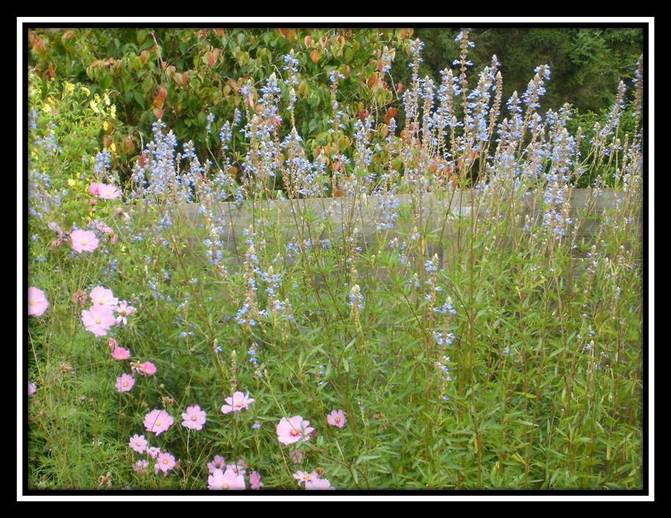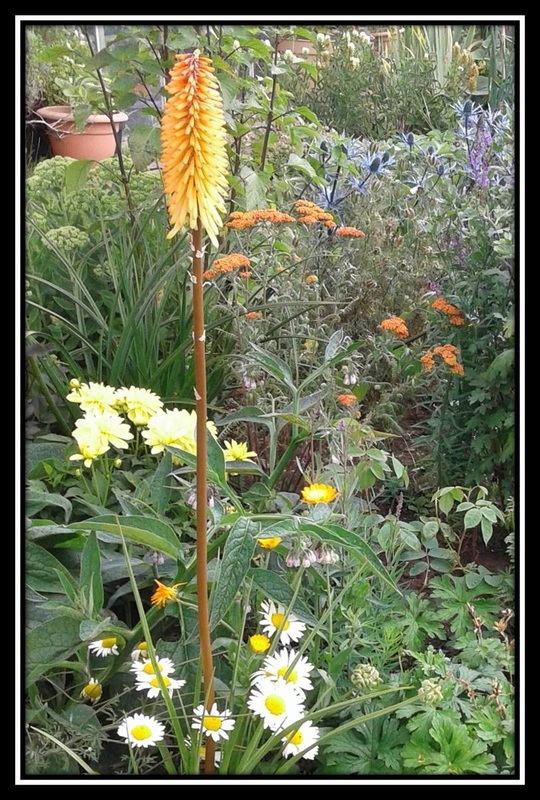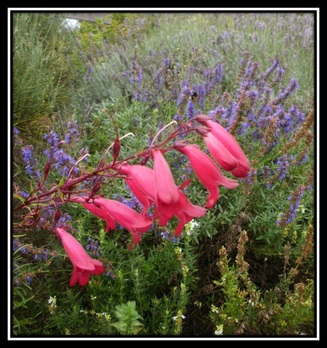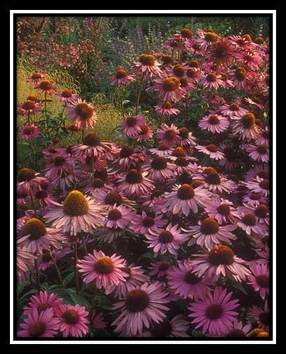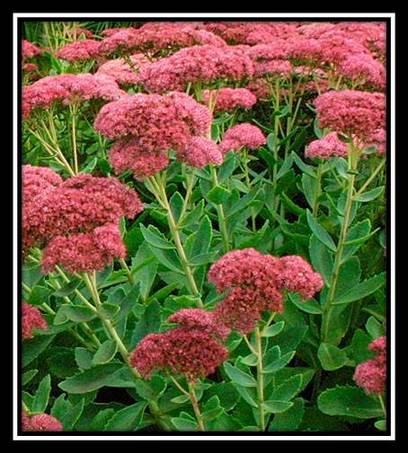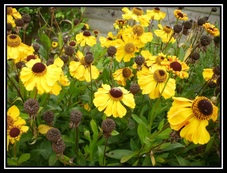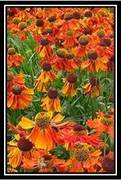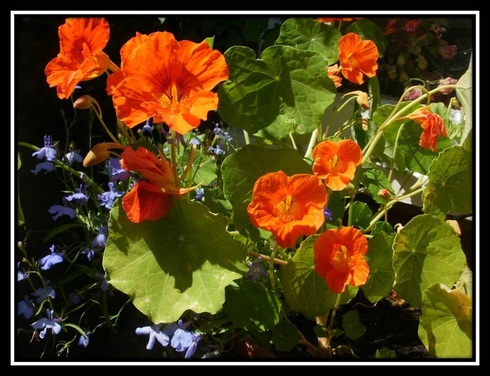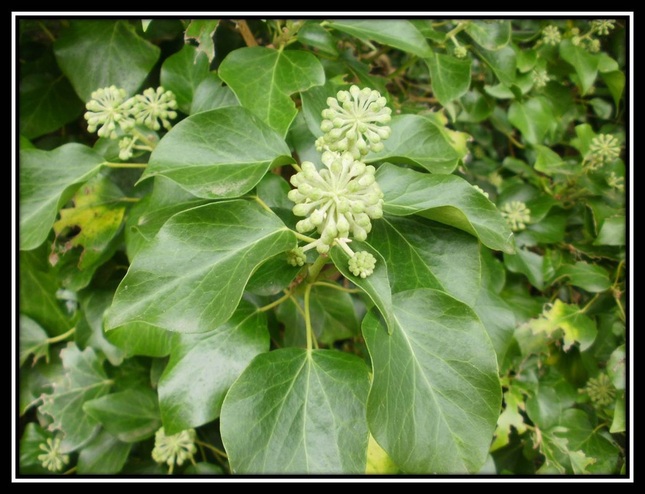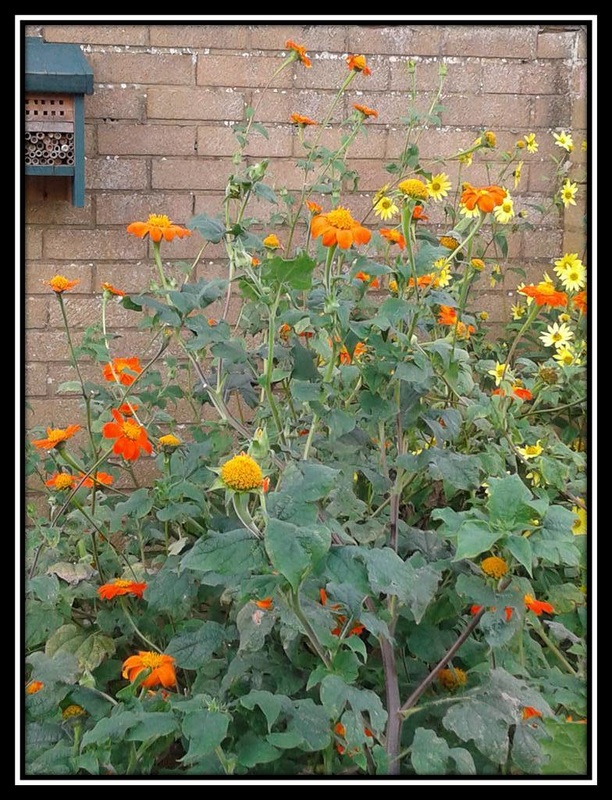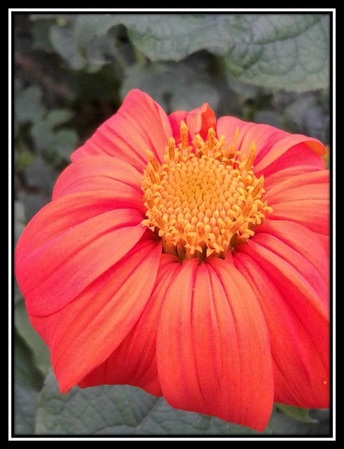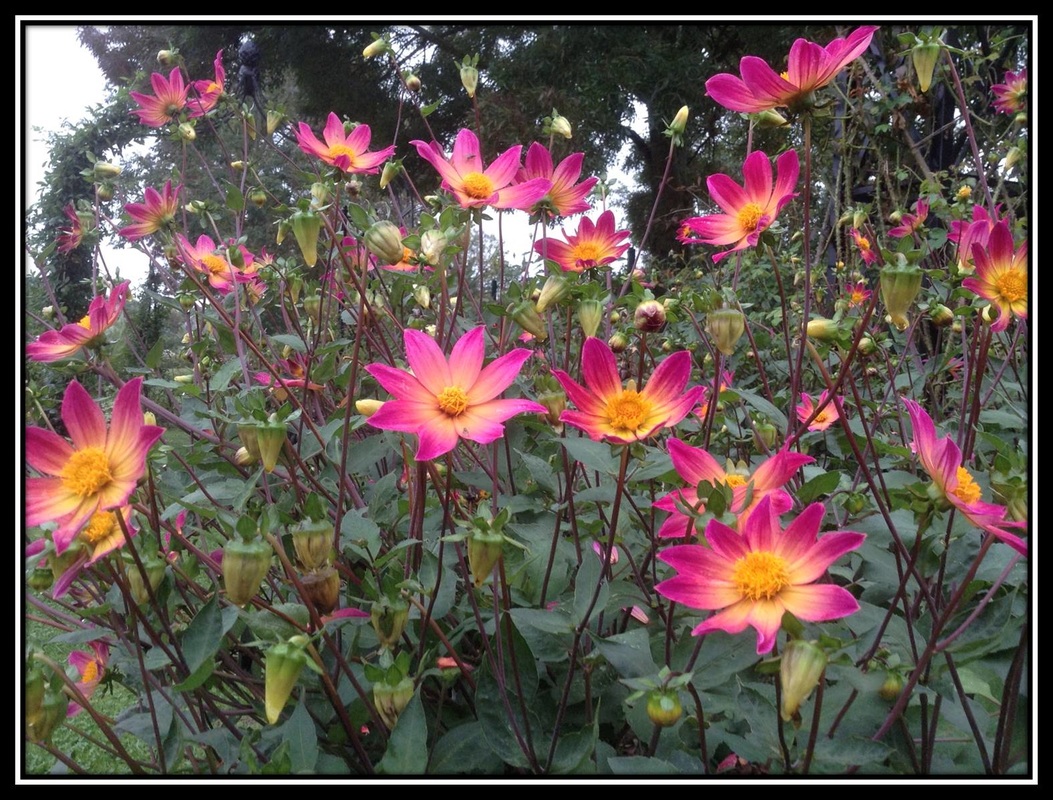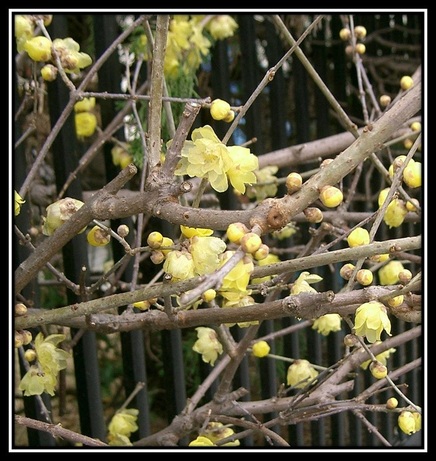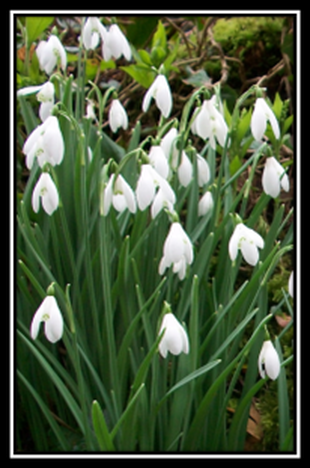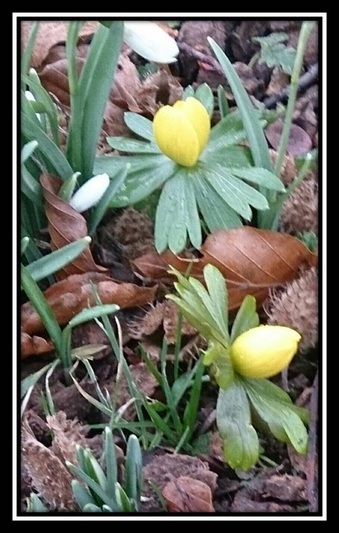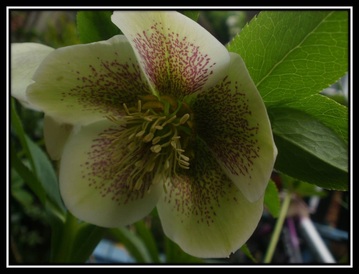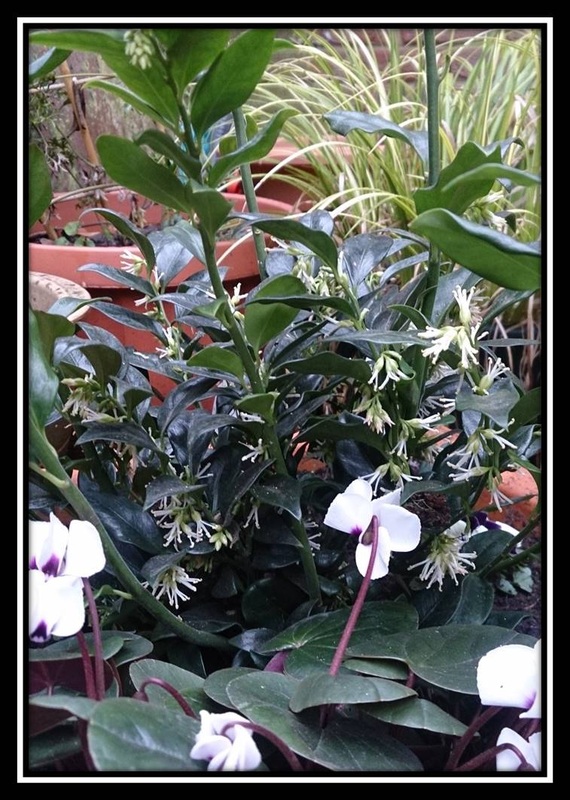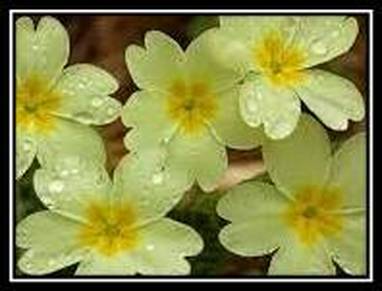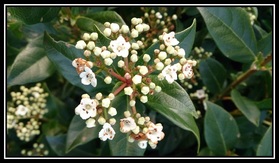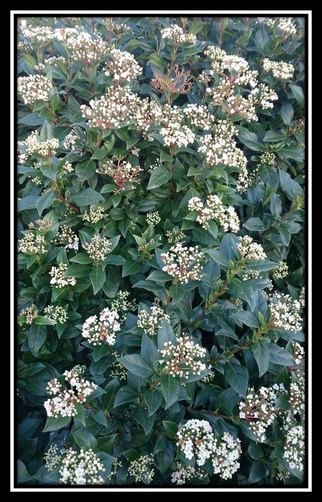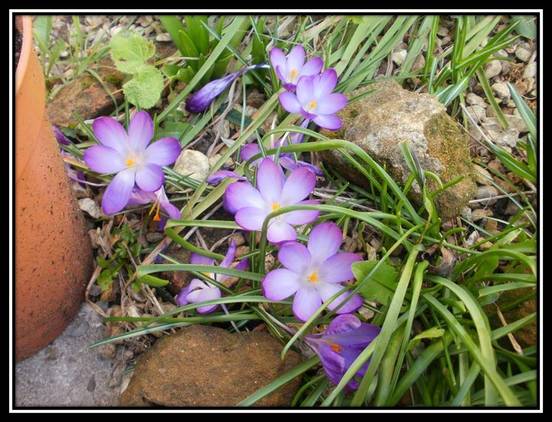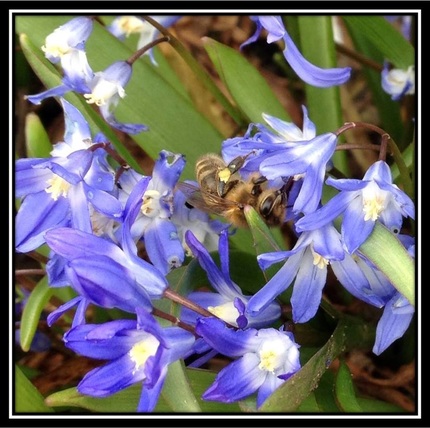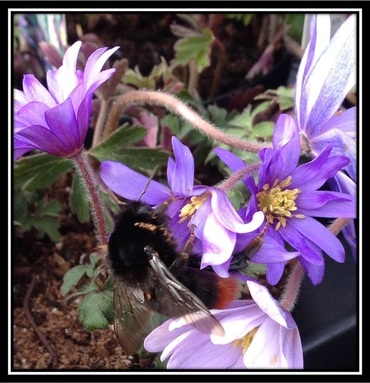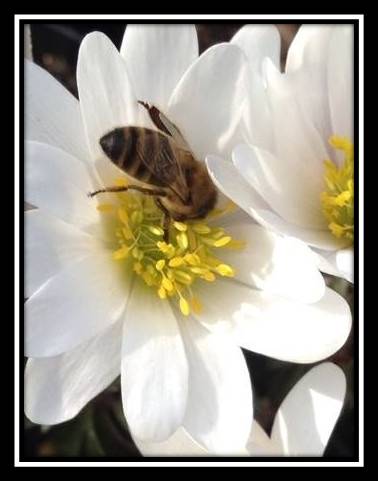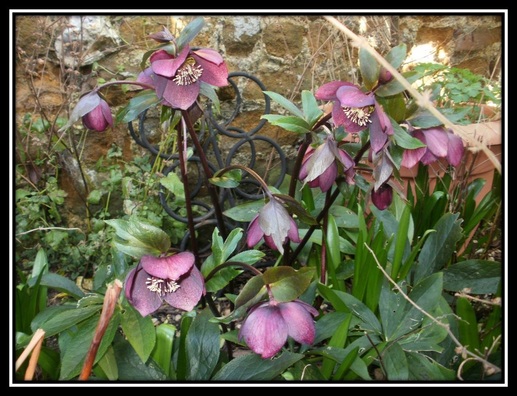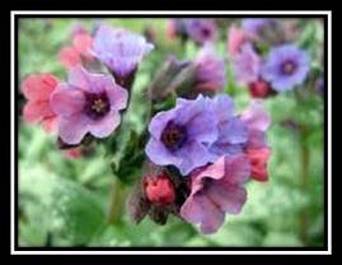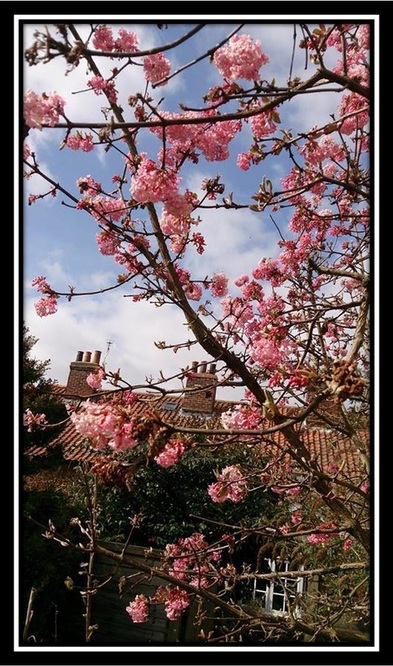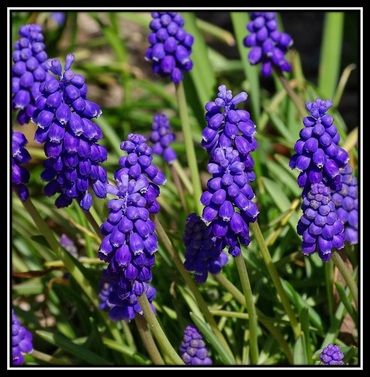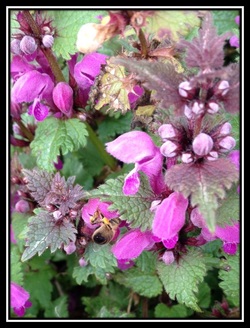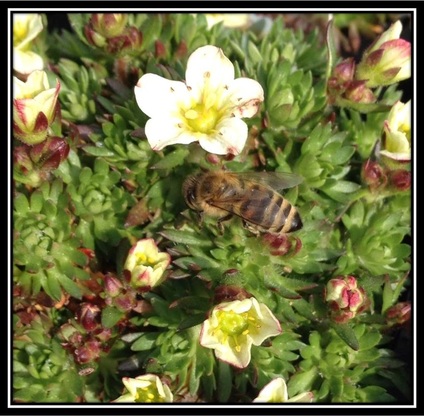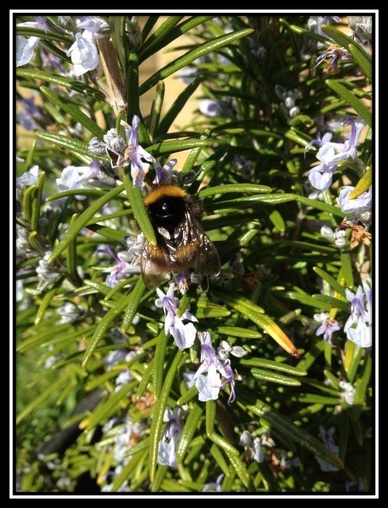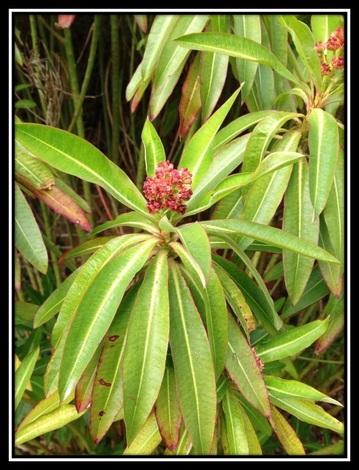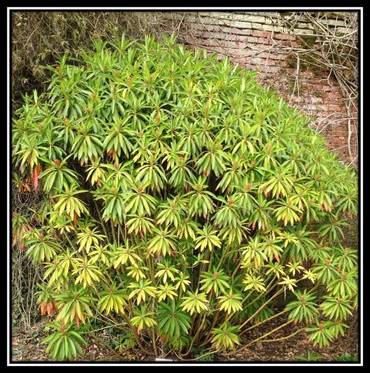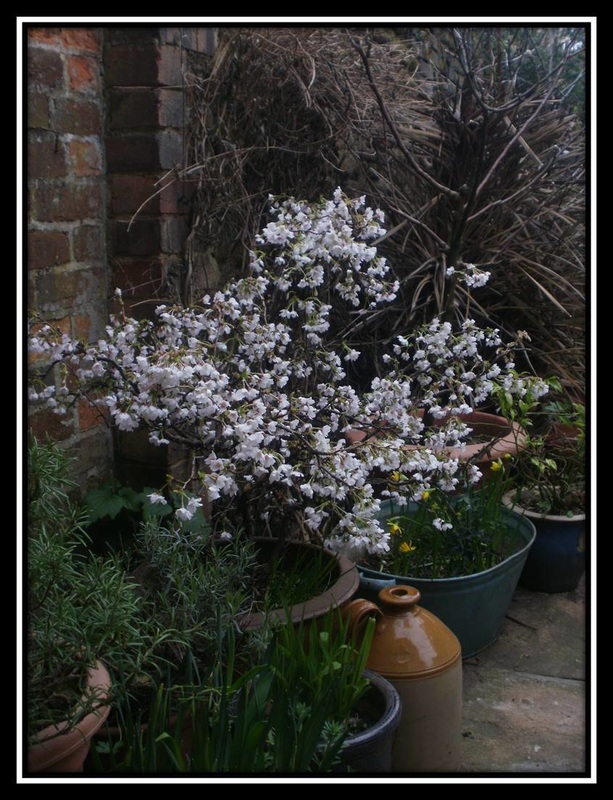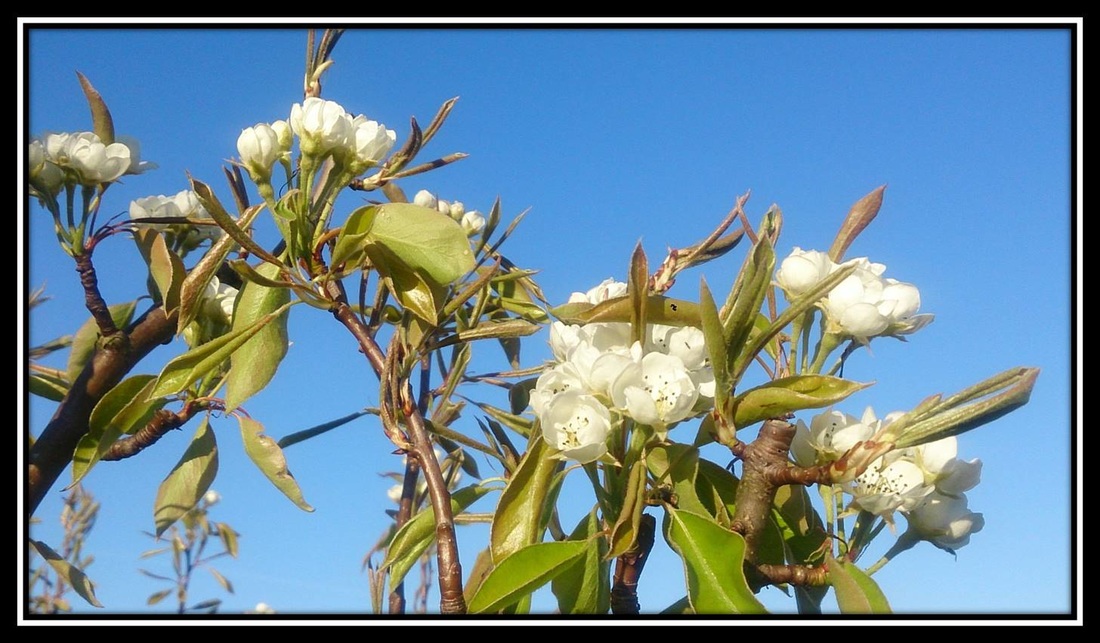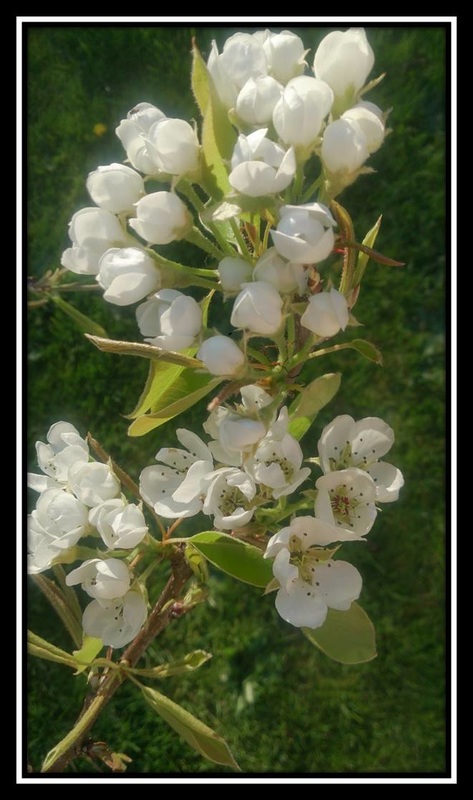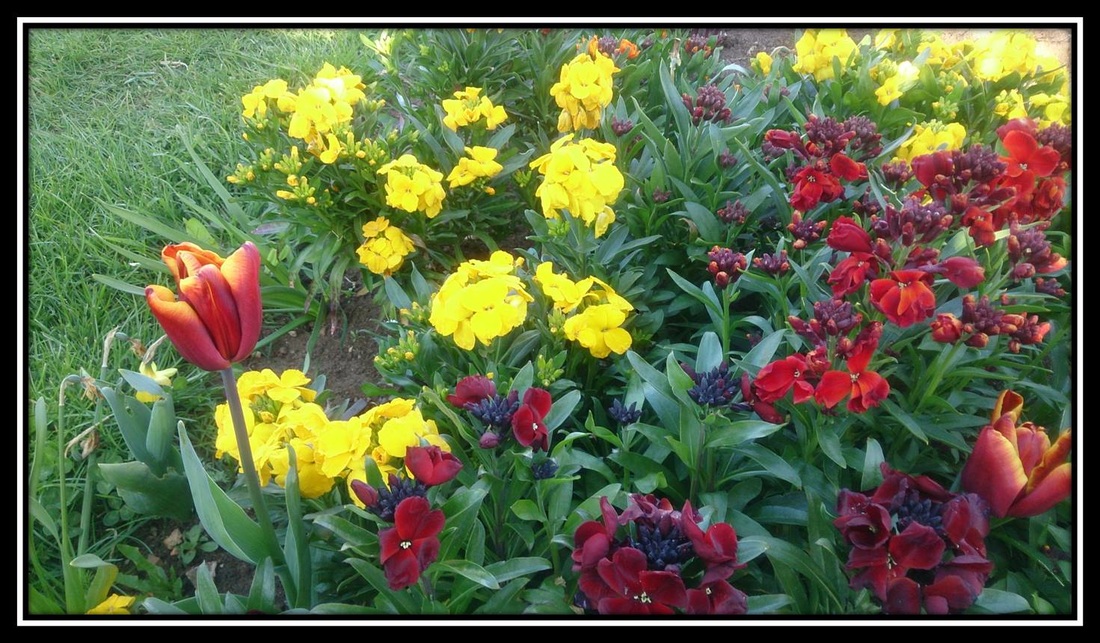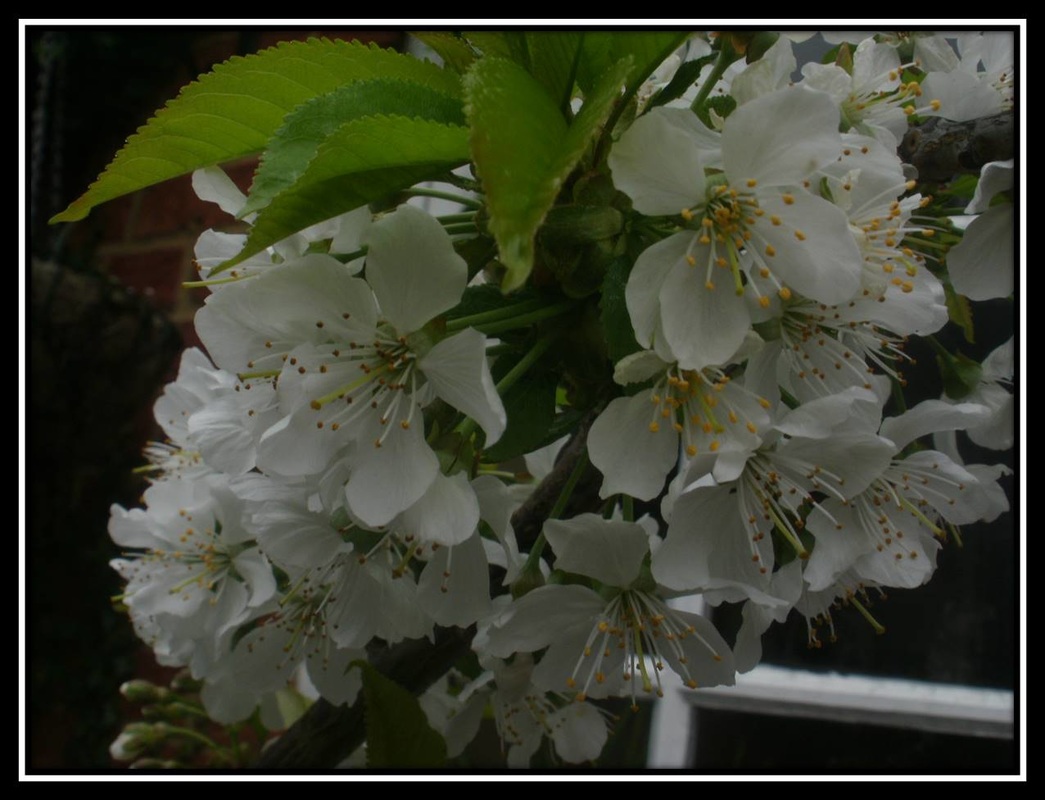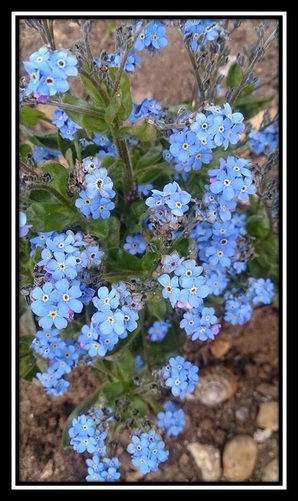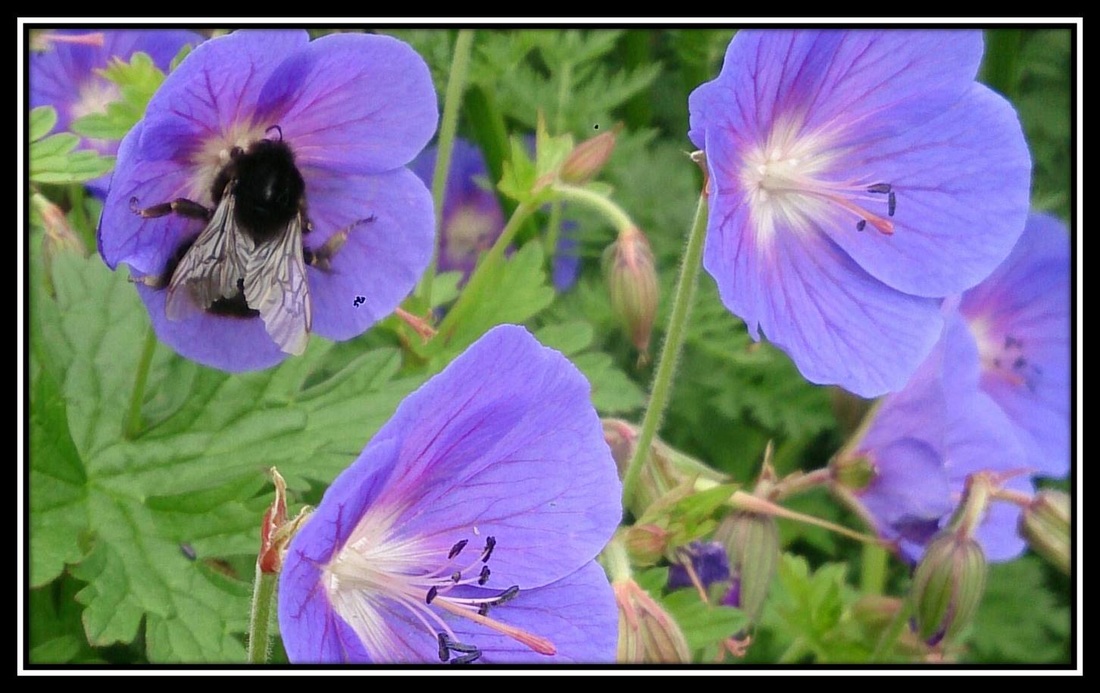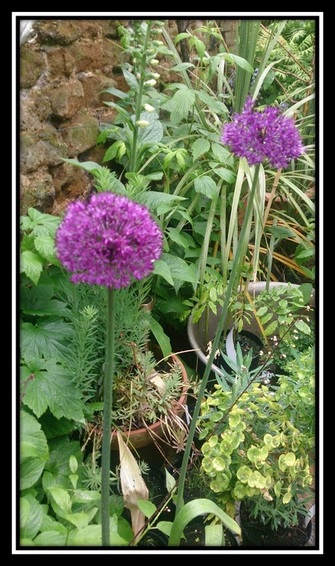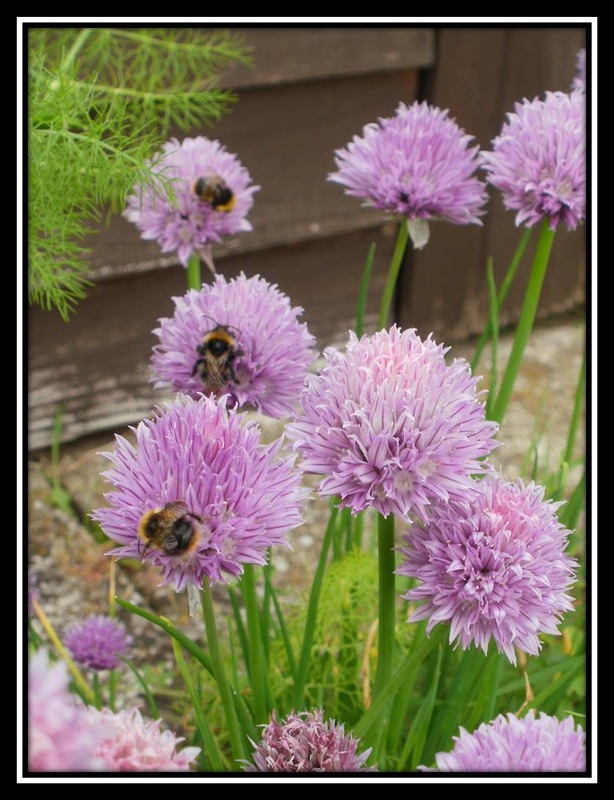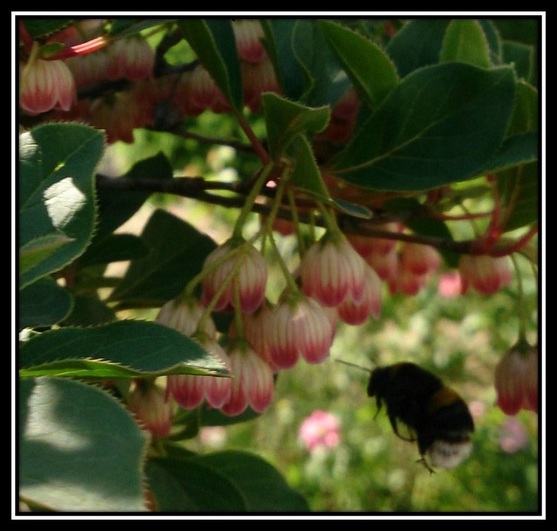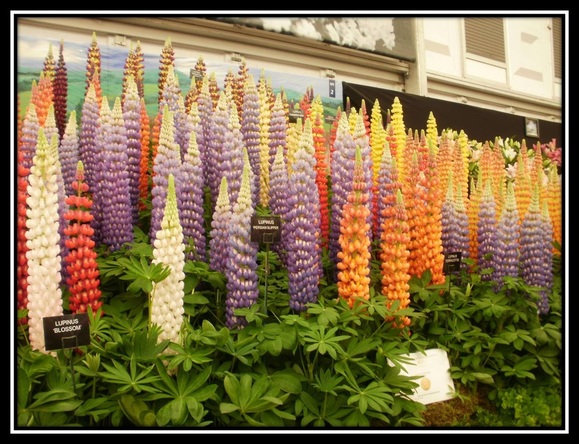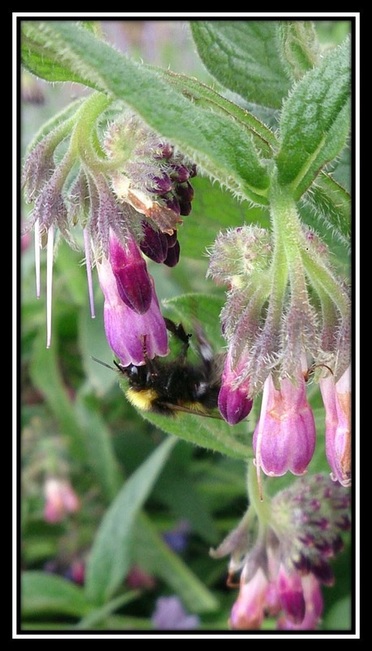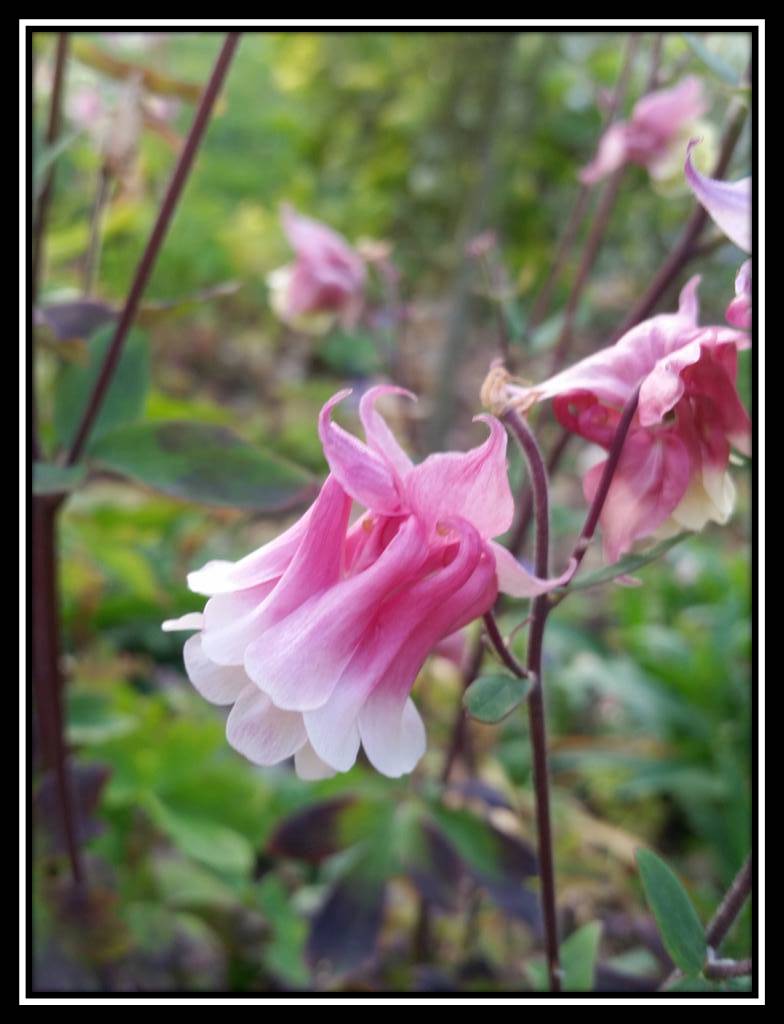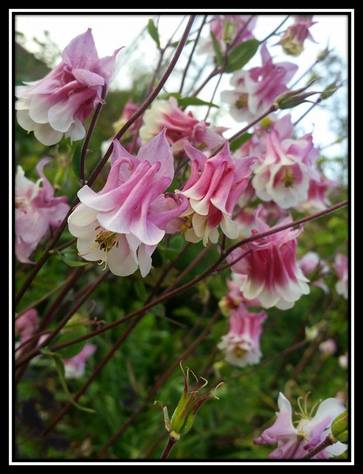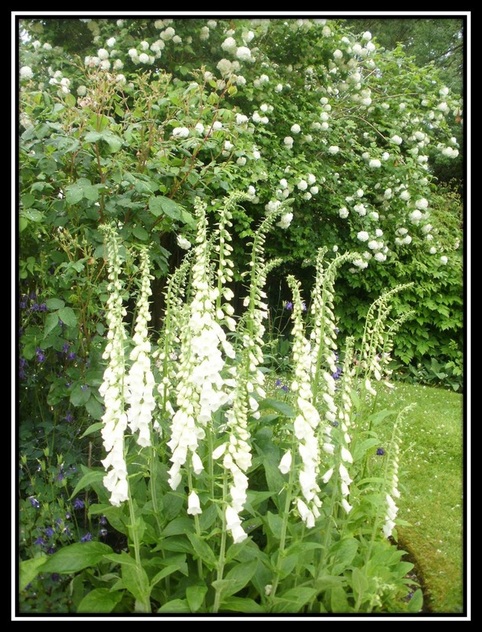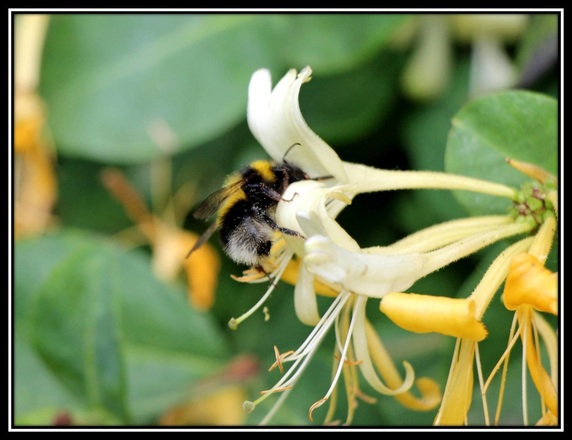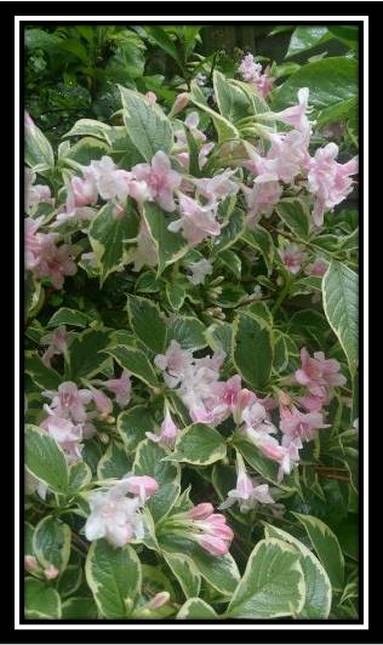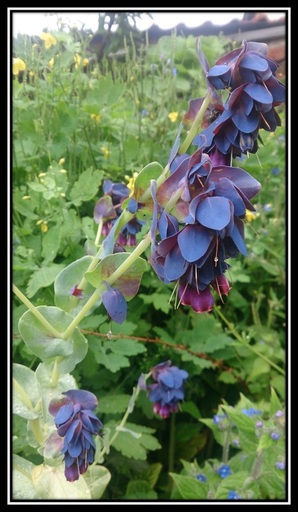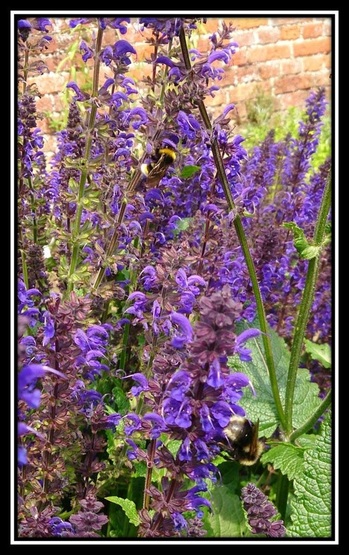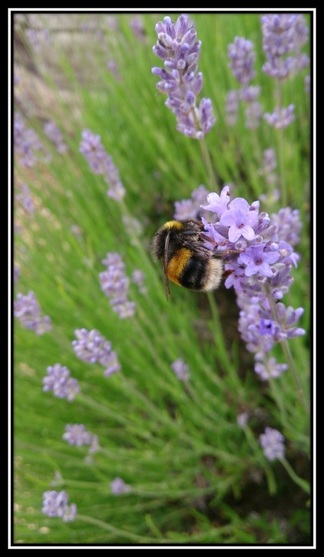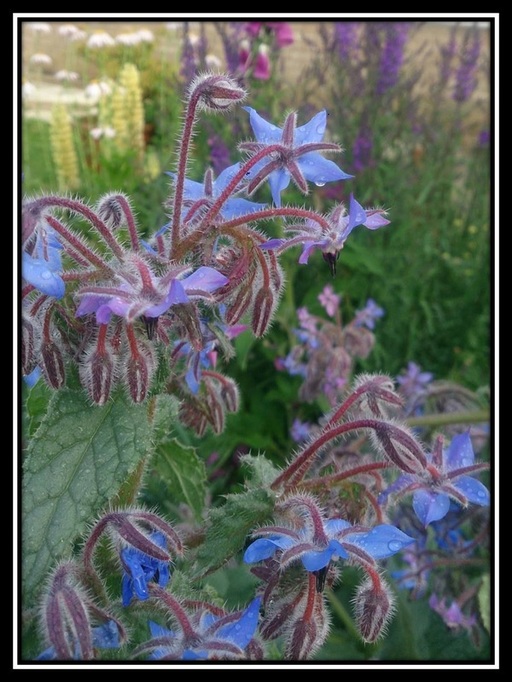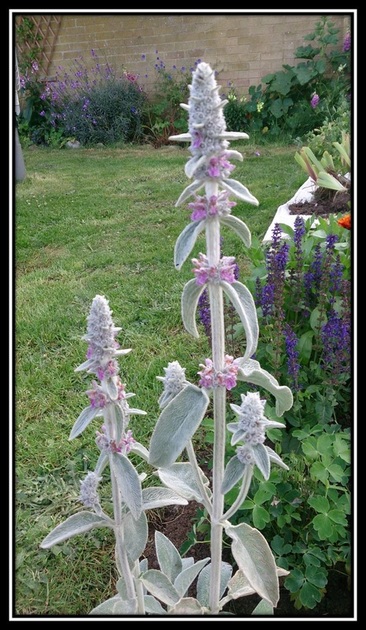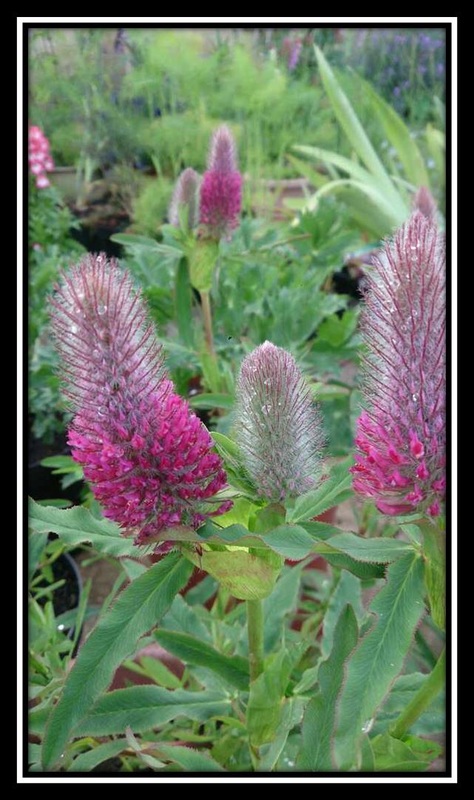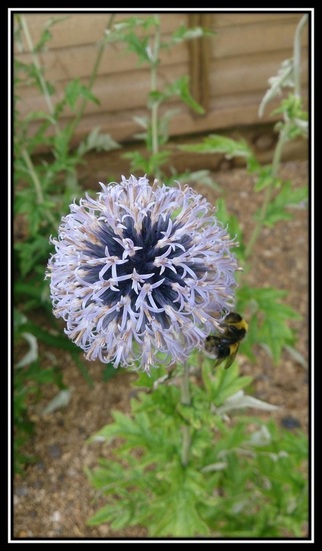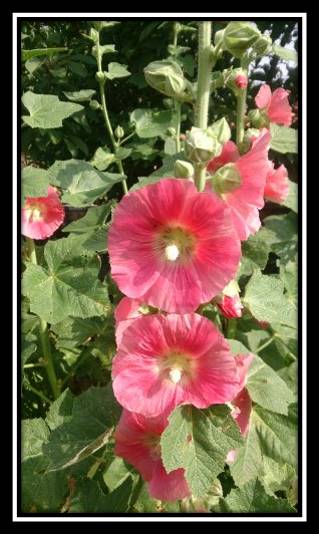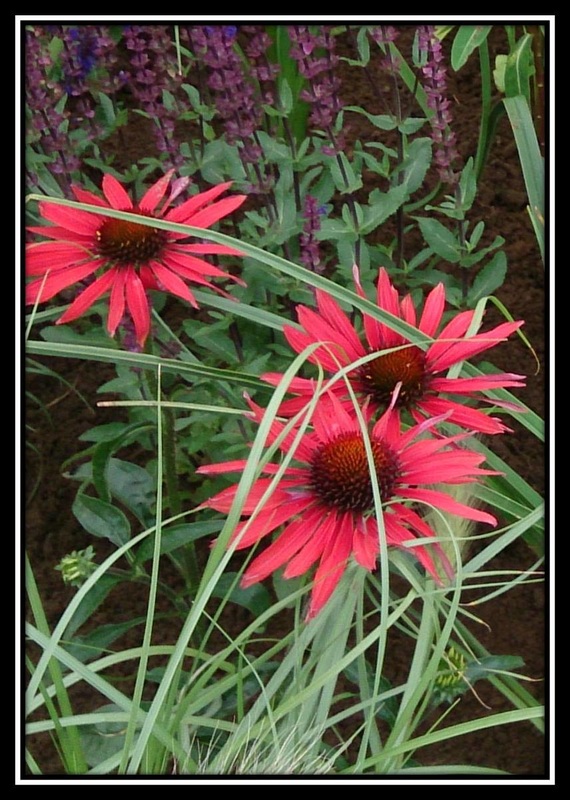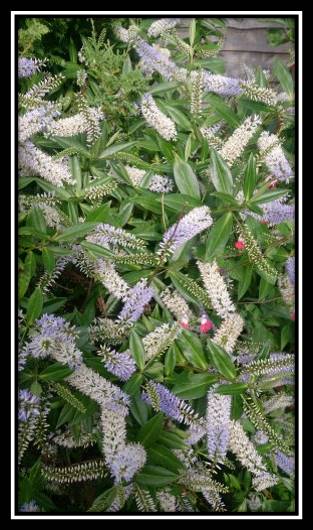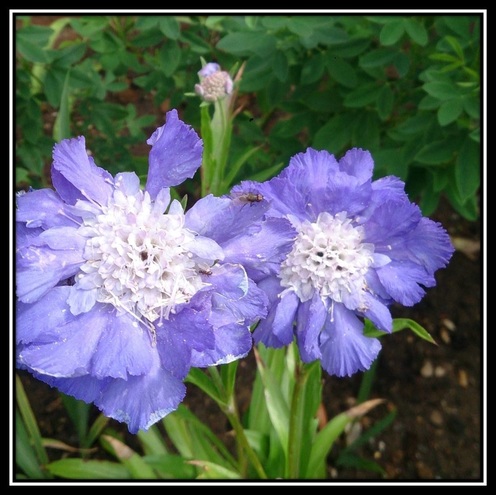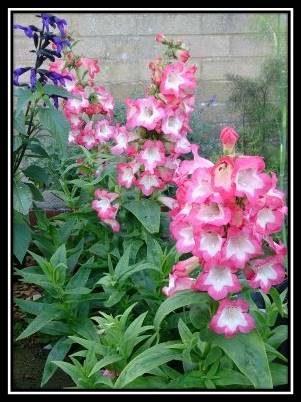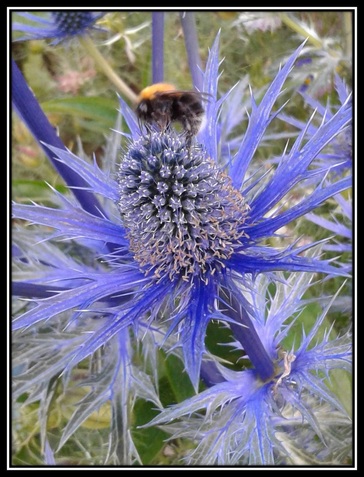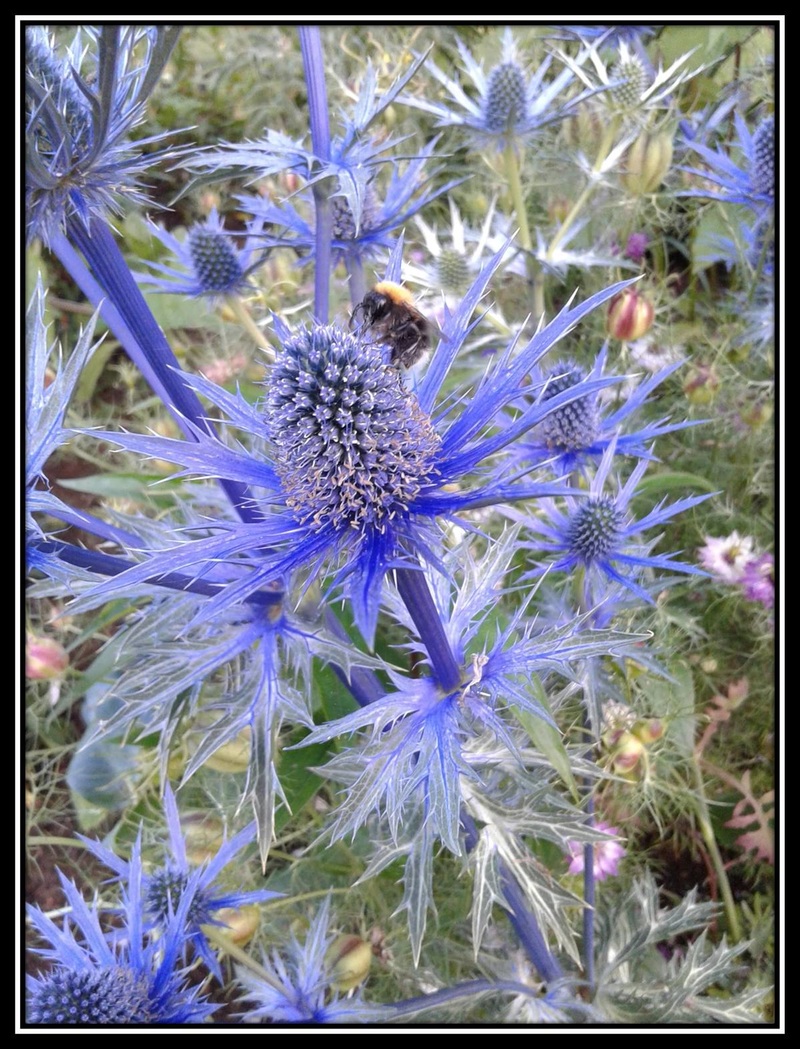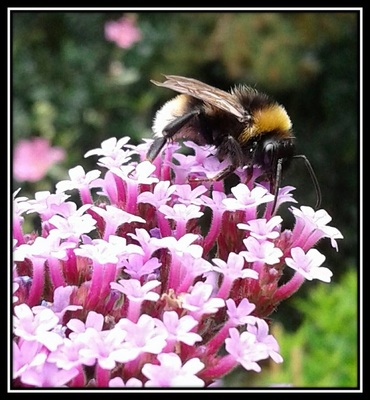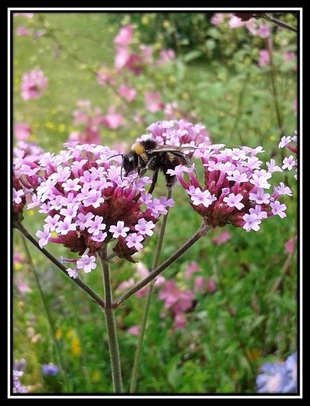I put the photos in this calendar in the month in which I take the picture. There are quite wide seasonal variations in temperature and light levels in the British Isles, so obviously this is a rough guide.
August
Salvia Amistad Linaria (toadflax)
Aster frikartii "Monch"
flowers for many weeks in late Summer
and early Autumn Agapanthus
flowers for many weeks in late Summer
and early Autumn Agapanthus
Agastache "Black Adder"
all the bees I know, find this irresistible.
all the bees I know, find this irresistible.
Salvia uliginosa
Kniphofia
Nectar rich fireworks!
Nectar rich fireworks!
September
Penstemon are still flowering Echinacea
their socks off in September.
their socks off in September.
Sedum
Helenium
Nasturtium
This has been flowering for months, but really
starts rampaging around in September.
starts rampaging around in September.
October
The garden slows down now, but bees
are still visiting a few plants like
Ivy
The garden slows down now, but bees
are still visiting a few plants like
Ivy
Tithonia
Dahlias
Dahlias come in many shapes and colours and some start flowering as early as July.....but they go on late into the autumn....single, simple flower headed varieties are the most accessible for bees.
Dahlias come in many shapes and colours and some start flowering as early as July.....but they go on late into the autumn....single, simple flower headed varieties are the most accessible for bees.
January
Chimonanthus praecox
(praecox meaning very early developing)
Very sweetly scented, and a great asset to a Winter garden
(praecox meaning very early developing)
Very sweetly scented, and a great asset to a Winter garden
February
Snowdrops
Winter Aconite
Sarcococca confusa
plant in shade in a pot or the ground......smells DIVINE
plant in shade in a pot or the ground......smells DIVINE
Primrose
Viburnum tinus
|
Quite honestly, I don't like this shrub. For most of the year it is a dark and dumpy black pudding of a plant. However, in late Winter and early Spring, it is covered in tiny white flowers, which the bees love, so I forgive it it's dowdy appearance, tuck it away somewhere unobtrusive and let the bees enjoy.
|
Crocus
March
Prunus "Okame"
This pretty ornamental cherry flowers quite early; end of February into March......it grows as a small tree (about 4 metres), but if your garden is really tiny, you can still have it, as it also comes in a shrub form, reaching about 1.5 metres over time........really good early feast for bees... saw a bumblebee on one today (13th March)
Chionodoxa
Very pretty blue flowers (bulbs)...... for very personal reasons this plant epitomises March for me and the bees love it
Very pretty blue flowers (bulbs)...... for very personal reasons this plant epitomises March for me and the bees love it
Anemone blanda
Perennial Wallflower, Erysimum "Bowle's Mauve"
More Hellebore
Pulmonaria (Lungwort)
Very popular with Hairy Footed Flower Bee
Very popular with Hairy Footed Flower Bee
Viburnum bodnantense "Dawn"
Has been in flower from about
December, but has a last fling in March
Has been in flower from about
December, but has a last fling in March
Muscari (bulbs)
Lamiam (Dead Nettle)
Saxifrage
Rosemary
Evergreen herb which likes sunshine and will grow in fairly poor soil, but not happy if it gets waterlogged
Evergreen herb which likes sunshine and will grow in fairly poor soil, but not happy if it gets waterlogged
Euphorbia mellifera
(or Honey Spurge) as in Apis mellifera (honey bee). Mellifera means honey-bearing.....a large structural shrub
(or Honey Spurge) as in Apis mellifera (honey bee). Mellifera means honey-bearing.....a large structural shrub
Stachyurus chinensis
April
Prunus incisa "Kojo-no-mai"
flowers from mid March into April
flowers from mid March into April
Pear blossom
Wallflowers
Doronicum
Apple blossom
Forget-me-not
May
Geranium
Alliums, especially Purple Sensation and Mount Everest, which are white, and Chives, who are part of the allium family
Enkianthus..... likes an acid soil
Centaurea
Lupins
This photo was taken at the Chelsea Flower Show. Bees won't expect you to put on such a splendid display
This photo was taken at the Chelsea Flower Show. Bees won't expect you to put on such a splendid display
Comfrey (Symphytum)
Comfrey is an excellent plant to have in your garden. Not only does it attract bees, but the cut leaves added to the compost heap help the composting process, and leaves chopped up and put on the soil act as a mulch, which quickly breaks down, providing Potassium to the soil.
Geum
This particular variety is Geum mai tai........it belts out flowers throughout May and looks great with the bright green of Euphorbias. There are many Geums to chose from; greatly appreciated by bees.
Aquilegia
A real cottage garden flower, which self seeds, popping up in places you wouldn't have thought of putting it
A real cottage garden flower, which self seeds, popping up in places you wouldn't have thought of putting it
JUNE
Foxgloves (Digitalis)
This is a must for a bee garden, but do be aware that foxgloves are poisonous.
This is a must for a bee garden, but do be aware that foxgloves are poisonous.
Honeysuckle
Weigela
An easy deciduous shrub; the flowers are a good source of nectar.
An easy deciduous shrub; the flowers are a good source of nectar.
Cerinthe (Honeywort)
The name is a bit of a clue.....an annual which self seeds, much loved by bees
The name is a bit of a clue.....an annual which self seeds, much loved by bees
Salvia
Salvias are in my top ten bee plants......they flower over a long period and the bees just can't get enough of them......
Phlomis tuberosa "Amazone"
Lavender....the quintessential bee plant
Borage
Borage is such a useful plant for bees..... It has very delicate flowers and thick, thuggish leaves, so better planted in a wilder part of the garden, as it can take over in a border. It is an annual, but once planted, will self seed very confidently every year.
Stachys byzantina (common name Lamb's Ears)
Trifolium rubens
A huge hit with bees, and a great favourite of mine!
These tactile, fluffy brushes flower for weeks in June and July, and will continue into the Autumn, if you deadhead them. A must in any self respecting bee garden.
A huge hit with bees, and a great favourite of mine!
These tactile, fluffy brushes flower for weeks in June and July, and will continue into the Autumn, if you deadhead them. A must in any self respecting bee garden.
July
Echinops
A real favourite of the bees
A real favourite of the bees
Hollyhock
A huge hit with bees, and flowers for many weeks
A huge hit with bees, and flowers for many weeks
Echinacea
Hebe
An evergreen shrub which flowers for months...this variety could still be in flower in November, so a really good choice.
An evergreen shrub which flowers for months...this variety could still be in flower in November, so a really good choice.
Scabious caucasica
So pretty, and attracts little solitary bees
So pretty, and attracts little solitary bees
Penstemon
Erigeron (Fleabane)
Eryngium
This is a massive hit with bees......they appear to visit from dawn till dusk....there are several varieties of this marvellously architectural plant.....they like free draining soil and lots of sun.... if you have these conditions, I highly recommend it.
This is a massive hit with bees......they appear to visit from dawn till dusk....there are several varieties of this marvellously architectural plant.....they like free draining soil and lots of sun.... if you have these conditions, I highly recommend it.
Verbena bonariensis
A terrific plant, that grows tall, but is delicate enough to mix in with other plants, and float above them, like little mauve butterflies... a true bee favourite.
A terrific plant, that grows tall, but is delicate enough to mix in with other plants, and float above them, like little mauve butterflies... a true bee favourite.
Antirrhinum
Grown as an annual, but actually a short lived perennial....flowers for weeks......suitable for long- tongued bumble bees, although short tongued bees sometimes nibble a hole in the back of the flower, to get at the nectar that way.....clever little bees
Grown as an annual, but actually a short lived perennial....flowers for weeks......suitable for long- tongued bumble bees, although short tongued bees sometimes nibble a hole in the back of the flower, to get at the nectar that way.....clever little bees
